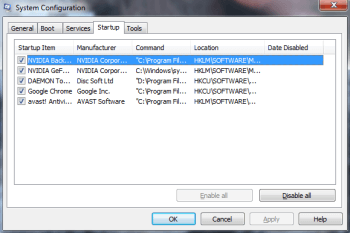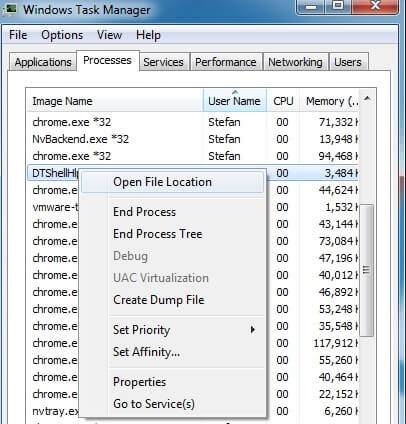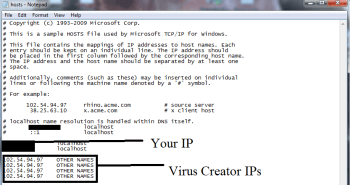
*Zatp is a variant of Stop/DJVU. Source of claim SH can remove
Zatp
Zatp is a Ransomware infection that can secretly encrypt your files. Once inside your computer, Zatp will lock your information, and ask for a ransom.

If you’ve ever had the bad luck of getting infected with Ransomware, you know this is one of the most terrible computer threats that might invade your PC. The main reason is, it can be very hard to deal with the harm the Ransomware can cause, which may, at times, be irreparable. Since you are on this page, however, you’ve likely just learned that this threat in particular has invaded your system, and encrypted the data files on your hard-drives. This malware demands a ransom in exchange for the decryption key you need in order to get back the access to your secretly encrypted files. Don’t be discouraged though since, on this page, we’ve created a removal guide to assist you with the removal of Zatp, and the potential recovery of some of your files without the payment of a ransom.
The Zatp virus
The Zatp virus is a very stealthy infection that can attack you secretly. Typically, while the Zatp virus operates, there are no visible symptoms.
Zatp is most frequently delivered via a spam email attachment, or with the assistance of a Trojan horse virus, or another well-camouflaged transmitter. The malware is mostly sent from some suspicious-looking email address, and the message will either have attached files in it, or it will include a hyperlink. The victim will typically download the infection by clicking on the link, or by opening the infected file. The virus will then start encrypting the documents found on the system. It is very unlikely that you will be able to detect the malware while the encryption is still underway since there usually are no visible symptoms of the file-encryption process.
The .Zatp file encryption
The .Zatp file encryption is a special code that is designed to keep your files inaccessible. The .Zatp file encryption can be unlocked only with a special decryption key.

The hackers behind the Ransomware like Zatp, Bozq, Bowd will typically offer to send you that special key if you fulfill their ransom demands. However, there is no guarantee that you will really get that promised key once the payment gets carried out. Remember, those hackers, who’ve broken into your system, and have virtually robbed you of your data by denying you the access to it, are hardly people you can trust. Of course, the decision whether to pay the ransom, or seek other methods is yours. But if you are looking for advice, we suggest you consider trying out our file-recovery suggestions in the guide below. For one, they won’t cost you anything, and they certainly won’t make things worse because they won’t mess with your files during your attempts to unlock the data. And, secondly, you will be able to remove the Zatp virus from your system, and make it safer for future use.
Finally, we believe it is our responsibility to mention a few easy-to-follow tips that many web users neglect when it comes to system protection:
- Ensure that you always have a reliable anti-malware program that runs frequent system checks.
- Do not visit websites with questionable reputation, and many obscure ads in them.
- It’s definitely not advisable to download files, and software from sketchy sources with low reputation.
- When receiving messages from unidentified senders, be very cautious, particularly if they include attachments and/or hyperlinks.
SUMMARY:
*Zatp is a variant of Stop/DJVU. Source of claim SH can remove
Remove Zatp Ransomware

Ransomware, like as Zatp, may lurk in a variety of places on a computer. As a result, you’ll need to give the virus your whole focus if you want to find all of its dangerous components. As a preparation, you should first bookmark these removal instructions in your browser before you proceed with the rest of the steps
As a second, you should ensure that only the most important system processes and applications are running on the computer while trying to detect and remove Zatp. Restarting the PC in Safe Mode will ensure that. If you need assistance to reboot your system in Safe Mode, please use the free instructions from this link and then return to this removal guide by clicking on its bookmark.

WARNING! READ CAREFULLY BEFORE PROCEEDING!
*Zatp is a variant of Stop/DJVU. Source of claim SH can remove
After you boot the infected machine in Safe Mode, enter msconfig in the Windows search. Open the result and a System Configuration window will appear on the screen.

The first thing you should do is check the Startup tab for any strange startup items. A malicious Startup Item may have been introduced by Zatp and configured to launch as soon as the machine boots up.
Research online if you see anything odd and decide whether you need to deactivate it depending on the information you gather.
Remove the tick from the corresponding checkbox and click OK to deactivate a suspicious startup item.
Next, open the Windows Task Manager (CTRL + SHIFT + ESC) and click on the Processes Tab. Find suspicious processes by searching the list of processes as you did in the Startup tab. Keep in mind that Zatp may disguise its malicious processes by using names that seem like genuine processes. An entry that consumes a lot of CPU and Memory while running without apparent reason, or one with an unusual name, should be checked in the following way:
• Right-click on the process you’re concerned about.
• Choose Open File Location.

Scan the files of that process for malicious code with the help of the free virus scanner below:

If one or more files related to the processes in question are detected as harmful, the process should be ended. The dangerous files should be deleted from their location.

The computer’s Hosts file is a common place where ransomware like Zatp may make unwanted alterations. In order to see whether this is your case, hold the Start Keyand R and copy the line below in the Run box:
notepad %windir%/system32/Drivers/etc/hosts
Click OK and the Hosts file should open. Locate Localhost in the text and check to see if any virus-creator IP addresses have been added below. What these IPs should look like is shown in the image here:

If you see nothing unusual in your Hosts file, you may just close it. If something unusual grabs your attention, please don’t make any changes or deletions. Instead, send us a copy of what’s disturbing you in the comments at the end of this guide.

In the event of a ransomware infestation, a very important thing that you need to do is remove the dangerous entries that the virus has placed in your Registry. To do that, type Regedit in the Windows Search bar and hit Enter.
You’ll see the Registry Editor open. Press CTRL and F at the same time, and type the virus’ name in the Find box to search for it. If any ransomware-related entries appear in the search results, they should be deleted from the Registry.
NB!!! If you remove registry entries that are not related to the ransomware, your system might be severely damaged. Please use a professional registry cleaner to remove harmful files from your registry to reduce the risk of involuntary system damage.
Once the Registry Editor has been cleaned, click the Windows Search bar and type each of the following lines in it one by one and press Enter after each:
- %AppData%
- %LocalAppData%
- %ProgramData%
- %WinDir%
- %Temp%
In the event that you discover entries with names that include random characters, or entries that were added shortly after you were infected with Zatp, they should be deleted.
All the files in the Temp folder must be deleted as well, since these are temporary files that may be linked to the ransomware infection on your computer.

How to Decrypt Zatp files
When trying to recover from a ransomware attack, it is crucial to keep in mind that the variant of ransomware that has infected you may need a different strategy and various tactics to be fully removed. We’ll propose a concrete method to deal with Zatp if that is the variant that has attacked your computer. You can tell whether you’ve been infected with Zatp by looking at the extensions that it adds to the encrypted files.
To decrypt ransomware-encrypted files, you must first check that the virus is completely eradicated from your machine. You may use professional anti-virus software such as the removal tool and the free online virus scanner on our site to remove Zatp and other sophisticated threats.
New Djvu Ransomware
STOP Djvu is the latest Djvu Ransomware variant that is attacking users worldwide. This variant can be easily recognized thanks to the addition of the .Zatp suffix to the encrypted files. Unfortunately, decrypting data encoded using this new variant may be very difficult, but still, there is a way to decrypt files encoded with an offline key. We’ve included a link to a decryption tool that may help you recover your files. Click on the Download button, to download the decryptor on your computer.
https://www.emsisoft.com/ransomware-decryption-tools/stop-djvu
The Decryption process
The decryptor will launch after selecting “Run as Administrator” and clicking the Yes button. Before continuing, please read the license agreement and the short instructions that appear on the screen. Decrypt your data by clicking on the Decrypt button in the next step. Use this tool with caution when dealing with data encrypted with unknown offline keys or files encrypted online, as these files may not be decoded with its help.
Let us know what you think or if you have any questions or concerns in the comments below.

Leave a Reply